16 Cancer Causing Foods You Probably
Eat Every Day

microwave popcorn
Photo credit: bigstock
It’s probably not something you think about every day, whether or not the foods you are eating could contain carcinogens, but with almost 1.5 million people diagnosed with some type of cancer just last year, perhaps it’s time to look at what is in our foods that could be causing such a huge number of new cancer patients. Here is a list of the top 10 foods that you most likely consume every day that may contain carcinogens or be suspected of causing cancer.
1. Microwave Popcorn
Those little bags of popcorn are so convenient to just stick in the microwave, you wouldn’t think for a minute that they could be dangerous to your health, but they are. First, let’s talk about the bag itself. It’s lined with a chemical called perfluorooctanoic acid ( PFOA). This is a toxin you can find in Teflon also. After being heated, this toxic chemical is known to cause infertility and cancer in lab animals. The EPA lists this chemical as a known carcinogen.
Now, let’s talk about the contents. Although every manufacturer uses slightly different ingredients, most of them use soybean oil (a GMO product) as well as various preservatives such as propyl gallate, a chemical that is causes stomach problems and skin rashes. Now they don’t actually say they are using GMO corn kernels, but that’s because the government says they don’t have to. Even if they don’t use GMO corn, you can bet they aren’t using organic corn!
Also, applied to the popcorn itself, is a chemical called diacetyl. Use of this chemical caused Conagra Foods to remove it from their brand of popcorn, ACT, because it was causing lung diseases in the workers at their factory.

2. Non-organic fruits
Fruits that are non-organic are contaminated with some very dangerous pesticides such as atrazine, thiodicarb, and organophosphates, as well as high nitrogen fertilizers.
Atrazine is banned in European countries but still used here. This is a weed killer that causes severe problems in humans, especially in our reproductive capabilities.
A 2009 study found that when pregnant women drank water contaminated with atrazine, their babies had reduced body weights. Were you aware that the sewage from cities in the USA (nicely called bio solids) is used in the fields of farms in the USA as a form of fertilizer? You will never find organic food being cultivated in composted human sewage waste!
Conventional foods are also subjected to an enormous amount of these types’ chemicals as well as hormones, to make the fruit and veggies grow bigger. Apples are probably the worst offenders with pesticides showing on more than 98 per cent of all apples tested. Fruits with a 90 per cent positive rate of pesticide residue included oranges, strawberries, and grapes.
Washing fruit does not remove 100 per cent of the residue. Pesticides are toxic chemicals to insects as well as human beings.

3. Canned Tomatoes
Actually, most canned foods are a concern because of what the can is lined with. The lining of almost all canned foods are made with a chemical called bisphenol-A, or BPA.
A study published in May of 2013 by the Proceeding of the National Academy of Sciences showed that BPA actually affects the way genes work inside the brain of rats. Even the FDA agrees that there is a problem with BPA as it is supporting efforts to either replace or at the very least, to minimize the amounts found in canned foods. You know it must be bad when even the very lax FDA is concerned!
Tomatoes are exceptionally dangerous due to their high acidity, which seems to cause BPA to leech from the lining of the can into the tomatoes themselves. The level of BPA can be so high in fact; you should seriously consider not feeding them to children. Due to FDA laws, there are no standards for labeling BPA so simply because a can does not say it has it does not mean that it does not contain BPA. Be safe and avoid cans. Cook fresh or buy glass bottles.

4. Processed Meats
What exactly are processed meats? This is a long list that includes, but is not limited to, sausages, hot dogs, bacon, most lunch meats like baloney or pimento loaf.
Researchers who wrote in the journal of BMC Medicine said that the excessive salts and chemicals that are used when making processed meats are damaging to your health. The study showed that 1 in every 17 people who were involved in the study died and those who ate 160 grams or more of processed meats increased their risk of early death as much as 44 percent within 12 years as opposed to those who ate 20 grams or less. This study involved people from 10 European countries and went on for almost 13 years.
All these processed meats contain numerous chemicals and preservatives, including sodium nitrates, which make them, look appealing and fresh but are well known carcinogens. Smoking meats seem to be particularly bad as the meat picks up tar from the smoking process. Yes, tar, the same deadly ingredient that cigarette smoke contains.

5. Farmed Salmon
Although fish sounds like one of the healthiest foods possible, farmed salmon is one you should avoid. Unfortunately, more than 60 percent of the salmon consumed in the USA is farm raised.
These fish are fed unnatural diets and are contaminated with chemicals, antibiotics, pesticides, and other known carcinogens. They live in very crowded conditions which results in these fish having 30 times the number of sea lice than wild salmon. (Doesn’t that sound appetizing?) Farmed salmon are fed chemicals to make their meat that reddish pink color that should occur naturally but doesn’t because of the diet of chicken litter that they are fed.
Also, due to their diet, they have less of the healthy omega-3 that we think we are getting when we consume fish. Studies have also shown that farmed salmon contain high levels of PCB’s, mercury, and cancer causing dioxins. Avoid farmed salmon and buy it canned or look for labels in your market that state the fish you are buying is wild sockeye salmon

6. Potato Chips
Yes, we know, potato chips are cheap, great tasting, quick snack, however, the negative effects they have on your body may not be worth the little bit of pleasure you derive from these crispy snacks.
Potato chips are high in both fat and calories, which are sure to bring on weight gain. A study done in the New England Journal of medicine found that eating just 1 once of potato chips per day caused an average 2 pound weight gain in one year. Besides being full of trans-fats which can cause high cholesterol in most people, they have excessive sodium levels which, for many people, cause high blood pressure.
Potato chips have artificial flavors, numerous preservatives, and colors as well, which is something else your body doesn’t need. Potato chips are fried in high temperatures to make them crispy but this also causes them to make a material called acrylamide, a known carcinogen that is also found in cigarettes.
It’s hard to say no to your kids demands for chips sometimes, therefore, as a sneaky alternative, buy them baked potato chips or tortilla chips which are at least lower in both fat and calories. Air popped popcorn and whole wheat pretzels are another healthier option. Or try baked apple chips or banana chips which are dehydrated. Both are crispy and are far healthier than regular potato chips.

7. Hydrogenated oils
Let’s start from the point that all hydrogenated oils are vegetable oils. Vegetable oils cannot be extracted naturally like butter is, vegetable oils must be chemically removed from their source, and then they are changed to be more acceptable to consumers. They are frequently deodorized and colored to look appealing.
All vegetable oils contain high levels of Omega–6 fatty acids. An excess of Omega- 6 fatty acids cause health problems, such as heart disease and in increase in various cancers, especially skin cancer. You need a good balance of both Omega 3 and Omega 6. Try to get plenty of Omega 3 every day. You can do this in the form of supplements and grass fed meats, also fatty fish such as salmon and mackerel are a very good source of Omega 3.
Hydrogenated oils are used to preserve processed foods and keep them looking appealing for a long as possible. Hydrogenated oils influence our cell membranes’ structure and flexibility, which is linked to cancer.

8. Soda Pop
Perhaps you heard about the recent study that was published in May in the American Journal of Nutrition? It found that people who consumed more than one soda per day had a higher risk of stroke than people who did not drink sodas.
Loaded with sugar, sodas are an empty source of calories that cause weight gain and contribute to the nationwide epidemic of obesity. Drinking large amounts of this rapidly digested sugar causes your blood sugar to spike which can lead to both inflammation and insulin resistance. Soda is often the root cause of gastro-esophageal reflux disease, which is when the contents of the stomach leak into the esophagus causing not only pain but an actual burning of the esophagus from stomach acid.
Although sodas are not a direct cause of ulcers, they are known to irritate and make those with ulcers have more pain. Sodas also contain artificial colorings and food chemicals like derivative 4-methylimidazole (4-MI); no wonder soda pop has been shown to cause cancer.

9. Highly processed white flours
Most of you have already heard by now that white flour is not a good thing, but you most likely have no idea just how bad it really is for your health. Refining grains destroys its natural nutrients. Mills are no longer content with waiting for their flour to whiten with time; mills now bleach flour with a chemical called chlorine gas.
The EPA states that chlorine gas is a dangerous irritant that is not safe to inhale and in large quantities can be lethal. White flour lurks in many processed foods. White processed flour has a very high glycemic rate which quickly raises the blood sugar level and insulin levels, which can be a direct cause of diabetes, not to mention it is believed that it spreads cancer cells by feeding the cells directly.
Cancerous tumors feed mostly on the sugars in your bloodstream. By avoiding refined grains such as white flour, you can avoid, or at the very least, starve tumors.

10. GMO’s
Genetically modified organisms, more commonly called GMO’s, are foods that have been modified by chemicals and grown with chemicals.
In a study done by Dr. Pusztai at the Rowett Institute in Scotland, rats were fed GMO foods, especially potatoes. ALL rats showed damaged immune systems, pre-cancerous cell growths, along with smaller brains and livers, in just the first 10 days of the project. American consumers believe that the FDA has approved these GMO foods and this is simply not the case.
The FDA has NO testing procedures for GMO foods, NONE. The only human study ever published showed that those foreign genes that are present in GM food transfer to the DNA in the bacteria in our digestive systems. We, the American consumer, are the guinea pig (or rat) in this case. Unfortunately, almost all grains, including soybeans, wheat, and corn, have been grown via GMO’s.
GMO’s do not have to be listed on food labels, so read carefully and look for labels that state the food is GMO free.

11. Refined Sugars
Refined sugars are not only known to spike insulin levels, but also to be the most preferable food for cancer cells, thus promoting their growth.
Cancers seem to have a sweet tooth. This is a known fact that has been around for many years. The Nobel laureate in medicine, German Otto Warburg, back in 1931, first discovered that tumors and cancers both use sugars to “feed” themselves and/or to increase in size. In order to proliferate, cancer cells seem to prefer feeding on fructose-rich sweeteners like high-fructose corn syrup (HFCS); the reason is that HFCS is being metabolized by cancer cells most quickly and easily.
Now it is clear why high-fructose corn syrup is considered the worst offender. And since cakes, pies, cookies, sodas, juices, sauces, cereals, and many other extremely popular, mostly processed, food items are loaded with refined sugars and HFCS in particular, this helps explain why cancer rates are on the rise these days.

12. Artificial Sweeteners
Most people use artificial sweeteners to either lose weight or because they are diabetic and must avoid sugar. The main problem in all this is that there are numerous studies that show people who consume artificial sweeteners on a regular basis, such as in sodas, or coffee sweeteners, actually gain weight. It also does little or nothing to help those with diabetes.
In fact, artificial sweeteners actually make it even more difficult to control their blood sugar levels and worsen conditions that are related to diabetes such as cataracts and gastro paresis. Sometimes aspartame has been found to cause convulsions, which some people will mistake for an insulin reaction.
Not to mention that artificial sweeteners inhibit your body’s ability to monitor its daily calorie consumption and make the body crave even more sweets. Well, we’ve already discussed how refined sugars can cause cancer.
There is mounting evidence that the chemicals that make up these sweeteners, especially aspartame, break down in the body into a deadly toxin called DKP. When your stomach processes this chemical, it in turn produces chemicals that can cause cancer, especially brain tumors.

13. Diet Anything
Diet foods, including frozen foods, or prepackaged foods labeled as “diet” or “low fat”, including diet sodas, generally contain aspartame, which is a chemical, artificial sweetener that we talk about in detail above. There are numerous studies showing that aspartame causes many diseases and sicknesses such as cancers, birth defects, and heart problems.
All “diet” food is chemically processed and made from super refined ingredients, excessive sodium levels, as well as artificial colors and flavors to make it taste good. Don’t ever forget, artificial anything is NOT real food! Although the FDA says that all these added chemicals are safe to eat, you might want to take their advice with a grain of salt. After all, don’t they also tell you that sugar and vegetable oils are safe to eat? (Not to mention GMO’s and fast food!)
There have been many studies that show that these additives, for some people, can actually be addicting. They feed that “feel good” part in your brain, similar to cocaine! Well, that actually makes sense because if you become addicted to these foods, the companies making them are certain to score a lot of money, aren’t they?
Be smart and eat nature’s own, natural “diet” food, fruits and vegetables! (Organic, of course!)

14. Foods that are highly salted, pickled, or smoked
Foods that are cured by use of nitrates or nitrites act as preservatives as well as adding color to the meat. Although nitrates do not cause cancer in and of themselves, under certain conditions these chemicals change once they are inside the body into N-nitroso composites. It’s this N-nitroso that is associated with a greater increase the risk of developing cancers.
Smoking foods such as meat or nuts causes these food items to absorb considerable amounts of the tar that smoke produces. Tar is a known carcinogen. Meats such as bacon, sausage, bologna, and salami are high in fat and salt. Pickled foods are also very high in salts.
There is overwhelming evidence that eating these types of foods greatly increases the risk of colorectal cancer and higher rates of stomach cancer. The rates of stomach cancer are much greater in places such as Japan where a traditional diet contains many foods that are highly salted, and/or smoked.

15. Alcohol
An American study that followed the diet and lifestyles of more than 200,000 women for almost 14 years found that postmenopausal women who drank one drink per day or less had an almost 30 percent increase in breast cancer rates compared to women who did not drink at all.
Alcohol use is the second leading cause of cancer, right behind tobacco use. While a moderate or low consumption of alcohol can be healthy and lead to a reduced risk of heart disease, excessive drinking is known to cause heart failure, stroke, and sudden death. In 2007, experts working for the World Health Organizations International Agency for Research on Cancer looked at the scientific evidence regarding cancer and alcohol use from 27 different studies. They found sufficient evidence to state that excessive alcohol use is the main cause of mouth, esophagus, liver, colon, mouth, rectum, and female breast cancers.
Don’t fret! You can still enjoy that glass of wine with dinner, but, for your health’s sake, no more than one!

16. Red Meat
For those of you, who love your T-bone steak, calm down. There is evidence that shows that red meat is actually a good thing in your diet, in small, infrequent amounts, Grass fed beef contains conjugated linoleic acid that actually fights against certain cancers.
However, in a study done over a 10 year period, eating red meat every day, even a small amount, such as that quarter pound hamburger you like to enjoy at lunch, increased a man’s risk of dying from cancer by 22 percent and a woman’s chance by 20 percent. A separate research study has shown that eating a lot of red meat increased the risk of breast, prostate, and colon cancer.
Red meat seems particularly dangerous when talking about colon cancer. A study done in the US followed almost 150,000 people between the ages of 50 and 74. This study showed that the long term consumption of red meat significantly increased the amount of colon cancer found in the subjects studied. On the other hand, the long term consumption of fish and poultry appeared to be protective in nature.
Enjoy that T-bone, but not every night, perhaps not even every week. Save those steaks for a once in while treat and be sure you are consuming grass fed, organic beef for your best health.










![Story from Jam Press (Skin Dot Cancer) Pictured: Video grab - Helaina Hillyard's video that went viral about her discovering she had cancer. Dots on her skin are from recent treatment from low platelets called petechiae. 'I was shocked when tiny DOTS on my skin turned out to be CANCER,' says woman, 20 A woman was left stunned after discovering the innocent-looking ???dots??? on her skin were actually a sign of blood cancer. Helaina Hillyard, 20, from Iowa, US, first noticed the freckle-like spots appearing on her body after getting back from basketball practice one evening in November 2021. Within a few hours, the spots had increased in size and were scattered across her body, covering her arms and legs. The athletic student initially assumed they were bruises from the sport, but decided to go to the hospital to get checked. To her surprise, she was sent to the emergency room, where blood work showed her blood levels were extremely low. The doctor explained the dots on her skin were petechiae ??? spots that appear as a result of internal bleeding. She was then transferred to another hospital where she saw an oncologist and was delivered the devastating news that she had B-Cell Acute Lymphoblastic Leukaemia ??? blood cancer. Incredibly, the only signs of her illness were the strange dots ??? with the student otherwise feeling fit and well. ???I was in disbelief and shock,??? Helaina, who is also a basketball player, told Jam Press. ???I could have nearly died if I waited a few more hours to go to the doctor. The doctor in the ER said I was extremely lucky I hadn???t played basketball [since that day] because I could have easily suffered a brain bleed or internal bleeding. ???I never in a million years could think something like this could happen to anyone in my life let alone myself.??? Helaina immediately started treatment with blood transfusions and chemotherapy ??? which she currently receives every 10 days. While she was terrified to receive the s](https://metro.co.uk/wp-content/uploads/2022/05/SEI_102288434.jpg?quality=90&strip=all&zoom=1&resize=540%2C1023)











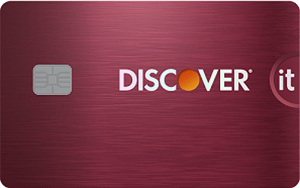





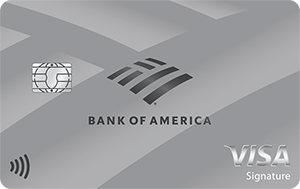

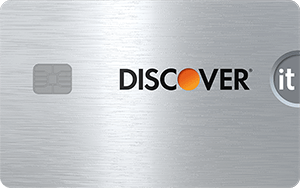
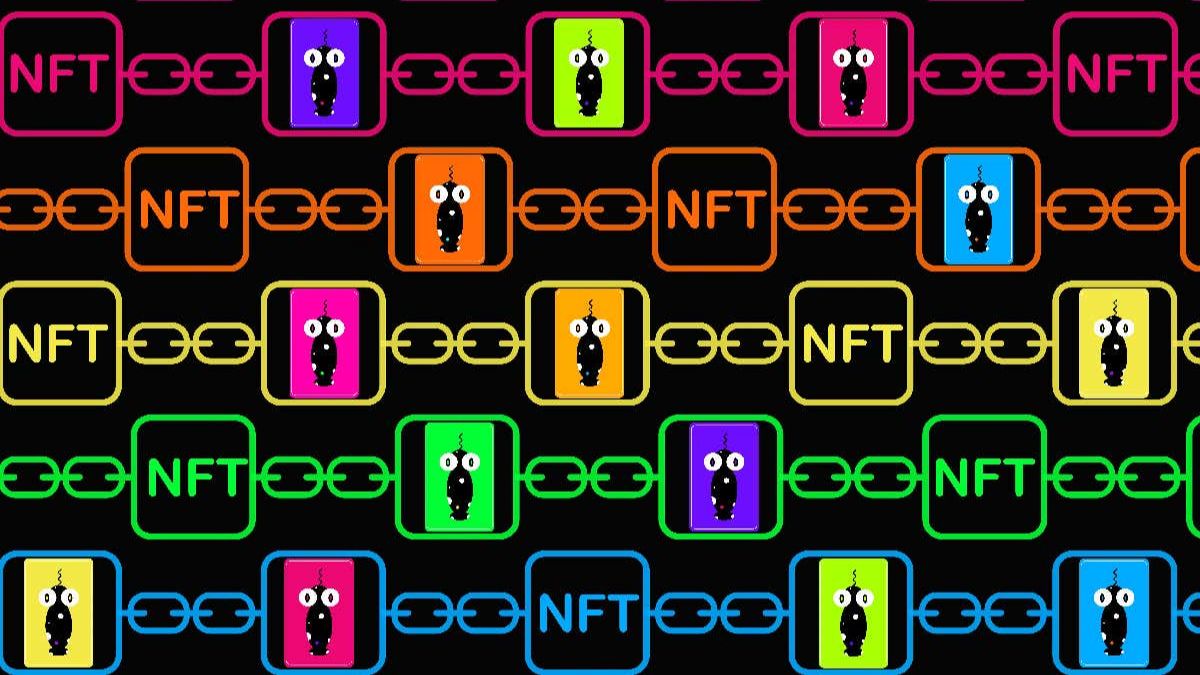






























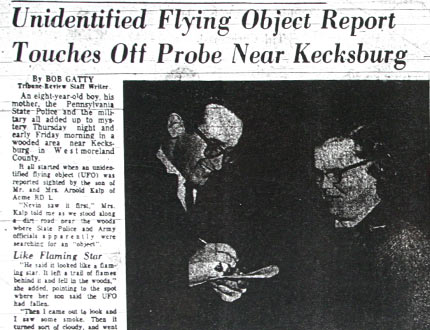

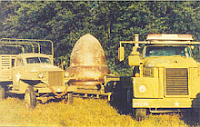












































 (Photo courtesy of Griffith Park Connectivity Study)
(Photo courtesy of Griffith Park Connectivity Study)



































 Have
you ever wondered how some people can speak multiple languages fluently
or how some people seem to pick up new languages almost effortlessly?
Many of these people have used the Pimsleur Approach – A well known
provider in audio-based language learning. It’s a unique method that’s
been used by over 25 million people to quickly and effectively learn a
new foreign language in just 10 days. Even the FBI purchased the
Have
you ever wondered how some people can speak multiple languages fluently
or how some people seem to pick up new languages almost effortlessly?
Many of these people have used the Pimsleur Approach – A well known
provider in audio-based language learning. It’s a unique method that’s
been used by over 25 million people to quickly and effectively learn a
new foreign language in just 10 days. Even the FBI purchased the 



 #HERBaLS Fenugreek
#HERBaLS Fenugreek and purify the
system, particularly the blood, by
promoting the excretion and removal of
waste material; it's febrifugal as it's
helpful in lowering fever, so much so
that it has been compared in this respect
to quinine; it's an expectorant and
affects immune system and reactivity due
to its ability to facilitate the removal
of the secretions of the
broncho-pulmonary mucous membrane and
cause expulsion of mucus from the
respiratory tract; it's a neuromuscular
stimulant, helping to reinforce the bone
structure and muscular tissues; it has
anti-fatigue properties and affects
endocrine system and hormone function as
well as nervous system and nerve function
due to its ability to prevent and relieve
fatigue; it's an anabolic agent and
stimulates muscular growth in the body by
promoting the metabolic tranformation of
nutrients into building blocks of muscles
through molecular synthesis; it's
anti-hypertensive and affects both the
endocrine system and the nervous system
due to its ability to prevent and treat
high blood pressure; it's
anti-inflammatory and affects immune
system and reactivity due to its ability
to counteract inflammation; it's
anti-oxidant and therefore helps to
prevent cell damage due to free radicals;
it's anti-hyperglycemic and affects
endocrine system and hormone function due
to its ability to reduce or control high
blood sugar, and this anti-hyperglycemic
action acts as a treatment in some cases
of acne, where an excess of sugars in the
follicules causes growth of patogenic
germs; it's vulnerary and affects immune
system and reactivity due to its ability
to heal and treat wounds, it's
haemopoietic or blood forming and
therefore helps the
and purify the
system, particularly the blood, by
promoting the excretion and removal of
waste material; it's febrifugal as it's
helpful in lowering fever, so much so
that it has been compared in this respect
to quinine; it's an expectorant and
affects immune system and reactivity due
to its ability to facilitate the removal
of the secretions of the
broncho-pulmonary mucous membrane and
cause expulsion of mucus from the
respiratory tract; it's a neuromuscular
stimulant, helping to reinforce the bone
structure and muscular tissues; it has
anti-fatigue properties and affects
endocrine system and hormone function as
well as nervous system and nerve function
due to its ability to prevent and relieve
fatigue; it's an anabolic agent and
stimulates muscular growth in the body by
promoting the metabolic tranformation of
nutrients into building blocks of muscles
through molecular synthesis; it's
anti-hypertensive and affects both the
endocrine system and the nervous system
due to its ability to prevent and treat
high blood pressure; it's
anti-inflammatory and affects immune
system and reactivity due to its ability
to counteract inflammation; it's
anti-oxidant and therefore helps to
prevent cell damage due to free radicals;
it's anti-hyperglycemic and affects
endocrine system and hormone function due
to its ability to reduce or control high
blood sugar, and this anti-hyperglycemic
action acts as a treatment in some cases
of acne, where an excess of sugars in the
follicules causes growth of patogenic
germs; it's vulnerary and affects immune
system and reactivity due to its ability
to heal and treat wounds, it's
haemopoietic or blood forming and
therefore helps the  formation of blood cells;
it's anti-spasmodic and affects nervous
system and nerve function due to its
ability to prevent or relieve spasms of
muscles; and fenugreek is an emmenagogue
and affects the endocrine system and
hormone function due to its ability to
promote or regulate the flow of menstrual
fluid.
formation of blood cells;
it's anti-spasmodic and affects nervous
system and nerve function due to its
ability to prevent or relieve spasms of
muscles; and fenugreek is an emmenagogue
and affects the endocrine system and
hormone function due to its ability to
promote or regulate the flow of menstrual
fluid.  The beneficial
effects were sustained over 5 to 6
months. For type 1 or insulin-dependent
diabetics, fenugreek also had a
beneficial effect, but a higher level was
needed to significantly reduce fasting,
blood glucose levels, decrease urinary
glucose levels, decrease daily insulin
requirements, and reduce LDL cholesterol
and triglyceride levels. Today fenugreek
is recognized as a useful botanical aid
in the treatment of diabetes and the
cholesterol-lowering effect of fenugreek
should be considered a valuable feature
for the diabetic who usually has elevated
blood lipids.
The beneficial
effects were sustained over 5 to 6
months. For type 1 or insulin-dependent
diabetics, fenugreek also had a
beneficial effect, but a higher level was
needed to significantly reduce fasting,
blood glucose levels, decrease urinary
glucose levels, decrease daily insulin
requirements, and reduce LDL cholesterol
and triglyceride levels. Today fenugreek
is recognized as a useful botanical aid
in the treatment of diabetes and the
cholesterol-lowering effect of fenugreek
should be considered a valuable feature
for the diabetic who usually has elevated
blood lipids.  Culinary
uses: The most well known use of
fenugreek as a food is as a flavouring in
curry dishes. In fact ground seeds are an
essential ingredient of curry powders,
oriental sauces, spice mixtures and also
halvah, the delicious sweetmeat.
Fenugreek is also a common ingredient in
chutneys, pickles, condiments, chewing
gum, soft drinks, gelatins, cakes,
puddings, ice creams, confectionery,
icing, and syrups, such as maple,
caramel, butterscotch and vanilla, and in
Egypt is used as a supplement in wheat
and maize flour for baking bread. The
seeds are sprouted for use in salads and
sandwiches, and the leaves are utilised
as a tasty ingredient in salads, soups,
stews and in cauliflower, bean, potato
and mango dishes. In India and the Arabic
world, the seeds are roasted and used to
make fenugreek coffee, a highly regarded
beverage. In other parts of the world,
fenugreek tea is popular and is regarded
as soothing and has a natural maple
flavour.
Culinary
uses: The most well known use of
fenugreek as a food is as a flavouring in
curry dishes. In fact ground seeds are an
essential ingredient of curry powders,
oriental sauces, spice mixtures and also
halvah, the delicious sweetmeat.
Fenugreek is also a common ingredient in
chutneys, pickles, condiments, chewing
gum, soft drinks, gelatins, cakes,
puddings, ice creams, confectionery,
icing, and syrups, such as maple,
caramel, butterscotch and vanilla, and in
Egypt is used as a supplement in wheat
and maize flour for baking bread. The
seeds are sprouted for use in salads and
sandwiches, and the leaves are utilised
as a tasty ingredient in salads, soups,
stews and in cauliflower, bean, potato
and mango dishes. In India and the Arabic
world, the seeds are roasted and used to
make fenugreek coffee, a highly regarded
beverage. In other parts of the world,
fenugreek tea is popular and is regarded
as soothing and has a natural maple
flavour.

 epilepsy and uncontrollable
movements. Later it was used to treat
asthma, morning sickness, hiccough,
rheumatism and gastritis related to
alcoholism.
epilepsy and uncontrollable
movements. Later it was used to treat
asthma, morning sickness, hiccough,
rheumatism and gastritis related to
alcoholism.  Culinary
uses: As with many plants, the
root of the wild yam is not just of
medicinal use in Asia but is also eaten
as a vegetable. It is often compared to a
potato, as when cooked it has a similar
appearance, but in taste it does not
resemble any potato and certainly not the
small, sweet potatoes which are often
erroneously called yams, as the wild yam
has a bitter taste and its commonest
culinary use is as an ingredient to
spice-up soups.
Culinary
uses: As with many plants, the
root of the wild yam is not just of
medicinal use in Asia but is also eaten
as a vegetable. It is often compared to a
potato, as when cooked it has a similar
appearance, but in taste it does not
resemble any potato and certainly not the
small, sweet potatoes which are often
erroneously called yams, as the wild yam
has a bitter taste and its commonest
culinary use is as an ingredient to
spice-up soups.
 regarded as a
fast acting herb, but must be seen as a
gradual remedy which needs to be taken
for some months to realise
its therapeutic properties.
regarded as a
fast acting herb, but must be seen as a
gradual remedy which needs to be taken
for some months to realise
its therapeutic properties. androgenic
hormones. It remains best known asa
remedy for PMS and its reputation in this
regard grows ever greater, its popularity
for this purpose having spread in modern
times from its native Europe to the
Americas, especially the United States
where it is generally known by its
botanical name of 'vitex agnus-castus' or
more often just 'vitex'.
androgenic
hormones. It remains best known asa
remedy for PMS and its reputation in this
regard grows ever greater, its popularity
for this purpose having spread in modern
times from its native Europe to the
Americas, especially the United States
where it is generally known by its
botanical name of 'vitex agnus-castus' or
more often just 'vitex'. were also used externally
to treat boils and inflammations. Later
the chaste tree became known to the
Persians, who used the berries with other
herbs to make remedies for calming
hysteria, madness and epilepsy.
were also used externally
to treat boils and inflammations. Later
the chaste tree became known to the
Persians, who used the berries with other
herbs to make remedies for calming
hysteria, madness and epilepsy.
 interest
increased when its beneficial effects on
the genitourinary tract were noted. At
this time it was used mainly as a
treatment for enlarged prostate,
cystitis, gonorrhea and irritation of the
mucous membranes. The use for which the
reputation of saw palmetto soared was the
first of these, enlarged prostate, and
the success attributed to the berry for
this application has led in recent times
to a multitude of research on the
subject. Dozens of studies have shown
that the reputation of saw palmetto for
this purpose is justified and that the
consumption of the berries and
the valuable phyto-nutrients they contain
interrupts the hormonal mechanism that
causes the prostate gland to be enlarged.
interest
increased when its beneficial effects on
the genitourinary tract were noted. At
this time it was used mainly as a
treatment for enlarged prostate,
cystitis, gonorrhea and irritation of the
mucous membranes. The use for which the
reputation of saw palmetto soared was the
first of these, enlarged prostate, and
the success attributed to the berry for
this application has led in recent times
to a multitude of research on the
subject. Dozens of studies have shown
that the reputation of saw palmetto for
this purpose is justified and that the
consumption of the berries and
the valuable phyto-nutrients they contain
interrupts the hormonal mechanism that
causes the prostate gland to be enlarged.
 Some
of the symptoms of BPH are a frequent
need to urinate, the feeling that the
bladder can never be completely emptied,
and a loss of sexual potency. The success
of saw palmetto in treating the enlarged
prostate and the commonness of the
condition has led in recent years to the
berry becoming one of the world's top ten
herbal medications. Saw palmetto may be
about to cement its reputation as a man's
herb, as there has been a recent surge in
experiments with the berry on its effect
on the male body generally and
particularly on whether its a possible
solution to male hair loss.
Some
of the symptoms of BPH are a frequent
need to urinate, the feeling that the
bladder can never be completely emptied,
and a loss of sexual potency. The success
of saw palmetto in treating the enlarged
prostate and the commonness of the
condition has led in recent years to the
berry becoming one of the world's top ten
herbal medications. Saw palmetto may be
about to cement its reputation as a man's
herb, as there has been a recent surge in
experiments with the berry on its effect
on the male body generally and
particularly on whether its a possible
solution to male hair loss..gif?timestamp=1368574937697)

 You’re no longer a ‘twenty-something.’ And you may be noticing some changes.
You’re no longer a ‘twenty-something.’ And you may be noticing some changes.






The Bryan O'Quinn Show